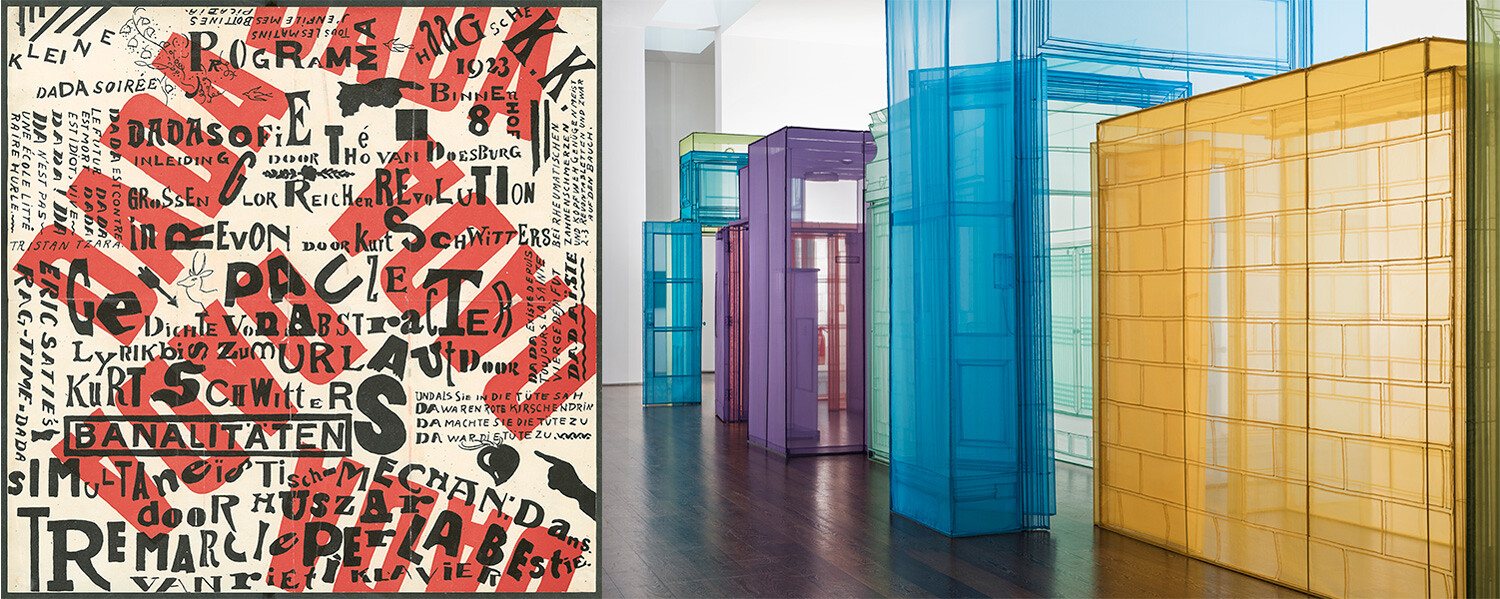Passages
November 17, 2017–April 15, 2018
November 17, 2017–May 20, 2018
Umeå Arts Campus
Östra Strandgatan 30B
SE-903 33 Umeå
Sweden
Hours: Wednesday–Sunday 12–5pm
T +46 90 786 74 00
info@bildmuseet.umu.se
Do Ho Suh / Passages
November 17–April 15, 2018
Artist Do Ho Suh investigates architecture as both physical and psychological spaces. He has meticulously documented the rooms where he has lived and worked—his childhood home in South Korea and apartments and studios in New York and London—to then recreate them as visually striking works of art.
In the installation Passage/s (2017) the artist combines passages and corridors from his various homes to create a 16-meters long walk-through configuration of structures occupying the top floor gallery at Bildmuseet. In one-to-one scale translucent fabric sculptures, Do Ho Suh gives form to experiences of mobility and change; crossing boundaries and moving between psychological states.
“I see life as a passageway, with no fixed beginning or destination,” says Suh. ”We tend to focus on the destination all the time and forget about the in-between spaces. But without these mundane spaces that nobody really pays attention to, these grey areas, one cannot get from point from point a to point b.”
The video Passage/s (2013–17) depicts a journey through an infinite corridor of shifting environments; while in My Homes/s (2014–17) the camera pans vertically and horizontally through a never-ending building. The exhibition also includes works on paper, such as his latest artistic process where his signature architectural pieces are compressed into large-scale two-dimensional “drawings.”
Do Ho Suh (b. 1962, South Korea) lives and works in London. He studied painting at Rhode Island School of Design and sculpture at Yale University. He represented South Korea at the Venice Biennale in 2011, and has exhibited at museums and institutions worldwide including Contemporary Arts Center, Cincinnati, US (2016); MOCA Cleveland, US (2015–16); MCA San Diego, US (2016); The Contemporary Austin, US (2014); National Museum of Modern and Contemporary Art, Seoul, Korea (2013); 21st Century Museum of Contemporary Art, Kanazawa, Japan (2012–13 and 2005); Hiroshima City Museum of Contemporary Art, Japan (2012); University of San Diego, US (2012); Samsung Museum of Art, Seoul, Korea (2012); Seattle Art Museum, US (2011 and 2013) and Tate Modern, London, UK (2011).
The exhibition at Bildmuseet, Umeå University, Sweden, is Do Ho Suh’s first solo exhibition in Scandinavia. Curator: Katarina Pierre. Our thanks to Lehmann Maupin, New York/Hongkong and Victoria Miro, London.
Dada is Dada
November 17, 2017–May 20, 2018
Dada is Dada presents paintings, drawings, documents, photography, collages, objects, sound recordings, and films from one of the most influential art movements of the 20th century. Dada began in 1916 in Zurich as a reaction to the conservative values of bourgeois society and conventional aesthetic ideals, to nationalism and the on-going First World War. In just a few years, the movement developed into a network of collaborations spread widely across the world, engaging more than 150 artists. Strong individual characters and great diversity made Dada an extremely dynamic collective.
Although Dada can be seen as the first international art movement, it was a melting pot of a lot of different styles. The movement was kept together by a critical attitude to society and art, a revulsion with anarchistic traits. The expression of a cultural revolt, Dada was to rally visual artists, authors, and musicians. In its mission to bring art and life together, Dada used new materials and invented new techniques, such as collage, ready-mades, happenings, performance, street theatre, sound poetry, and film. The works are often characterized by a surface of nonsense, irrationality, and playfulness. Humour, irony, wit, mockery, and satire constituted the language by which the Dadaists criticized and questioned their time.
Featuring the multiplicity of artists, authors, and poets who joined Dada or in different ways adopted its ideas, the exhibition focuses on their antinationalism, border-transcending network, and questioning of established systems and structures. It has been produced by Bildmuseet, with loans from private collectors and museums throughout Europe. Curators: Brita Täljedal, Alexandre Fruh, and Adrian Notz. Exhibition design: Alexandre Fruh, Atelier Caravane.
Visual artists and poets represented in the exhibition:
Pierre Albert-Birot, Celine Arnauld, Hans Arp, Hugo Ball, Erwin Blumenfeld, Bob Brown, Serge Charchoune, Paul Citroen, René Clair, Jean Crotti, Sonia Delaunay, Marcel Duchamp, Suzanne Duchamp, Joaquín Edwards Bello, Viking Eggeling, Max Ernst, Elsa von Freytag-Loringhoven, George Grosz, Raoul Hausmann, Emmy Hennings, Richard Huelsenbeck, Hannah Höch, Marcel Janco, Paul Joostens, Lajos Kassák, Greta Knutson-Tzara, Man Ray, Pierre de Massot, László Moholy-Nagy, Clement Pansaers, Francis Picabia, Georges Ribemont Dessaignes, Hans Richter, Kurt Schwitters, Kate Steinitz, Sophie Taeuber-Arp, Theo Van Doesburg, Paul Van Ostaijen, Henri Pierre Roché, Tristan Tzara, Carel Willink, Beatrice Wood.


